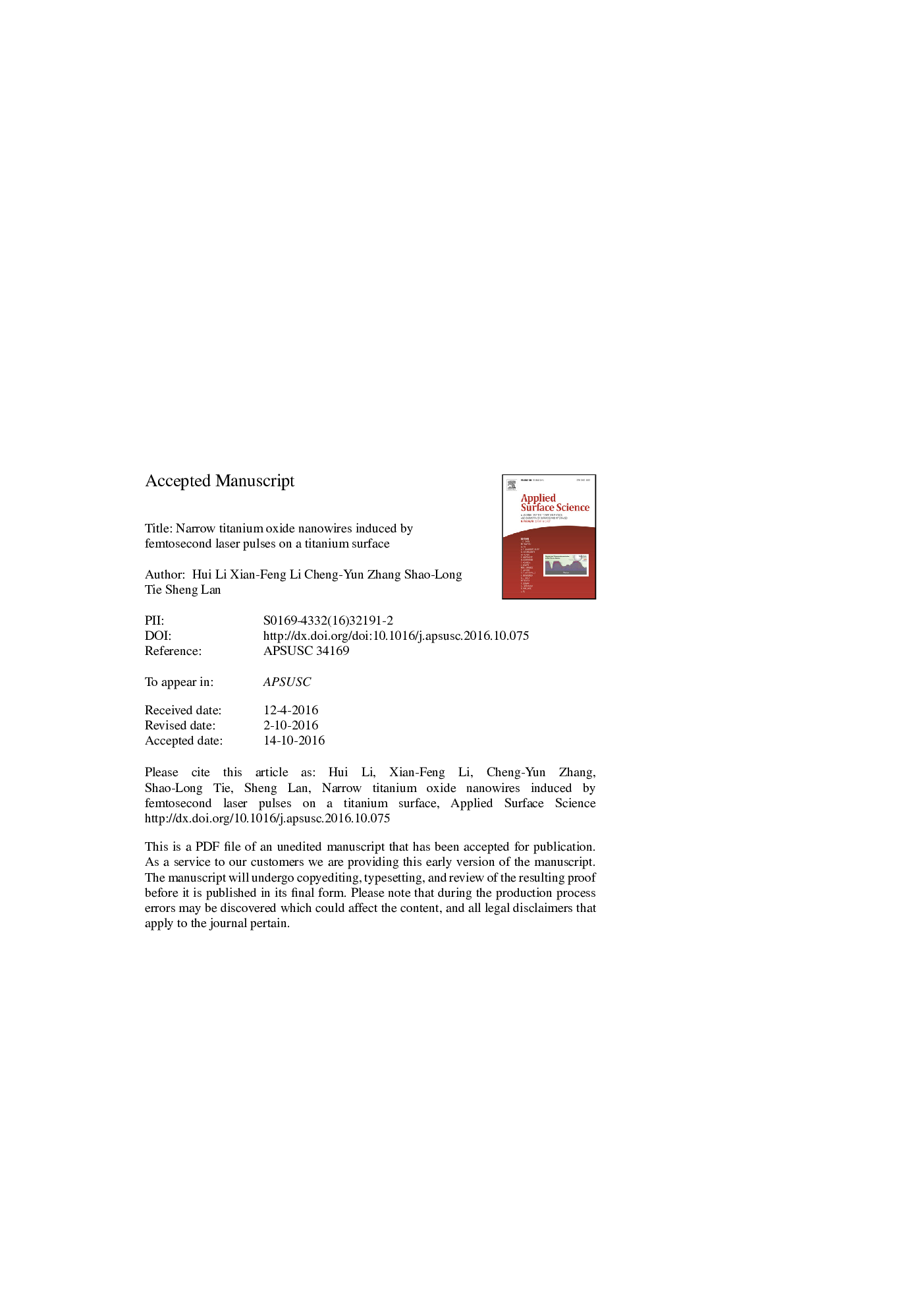| Article ID | Journal | Published Year | Pages | File Type |
|---|---|---|---|---|
| 5352698 | Applied Surface Science | 2017 | 24 Pages |
Abstract
The evolution of the nanostructure induced on a titanium (Ti) surface with increasing irradiation pulse number by using a 400-nm femtosecond laser was examined by using scanning electron microscopy. High spatial frequency periodic structures of TiO2 parallel to the laser polarization were initially observed because of the laser-induced oxidation of the Ti surface and the larger efficacy factor of TiO2 in this direction. Periodically aligned TiO2 nanowires with featured width as small as 20Â nm were obtained. With increasing pulse number, however, low spatial frequency periodic structures of Ti perpendicular to the laser polarization became dominant because Ti possesses a larger efficacy factor in this direction. The competition between the high- and low-spatial frequency periodic structures is in good agreement with the prediction of the efficacy factor theory and it should also be observed in the femtosecond laser ablation of other metals which are easily oxidized in air.
Related Topics
Physical Sciences and Engineering
Chemistry
Physical and Theoretical Chemistry
Authors
Hui Li, Xian-Feng Li, Cheng-Yun Zhang, Shao-Long Tie, Sheng Lan,
